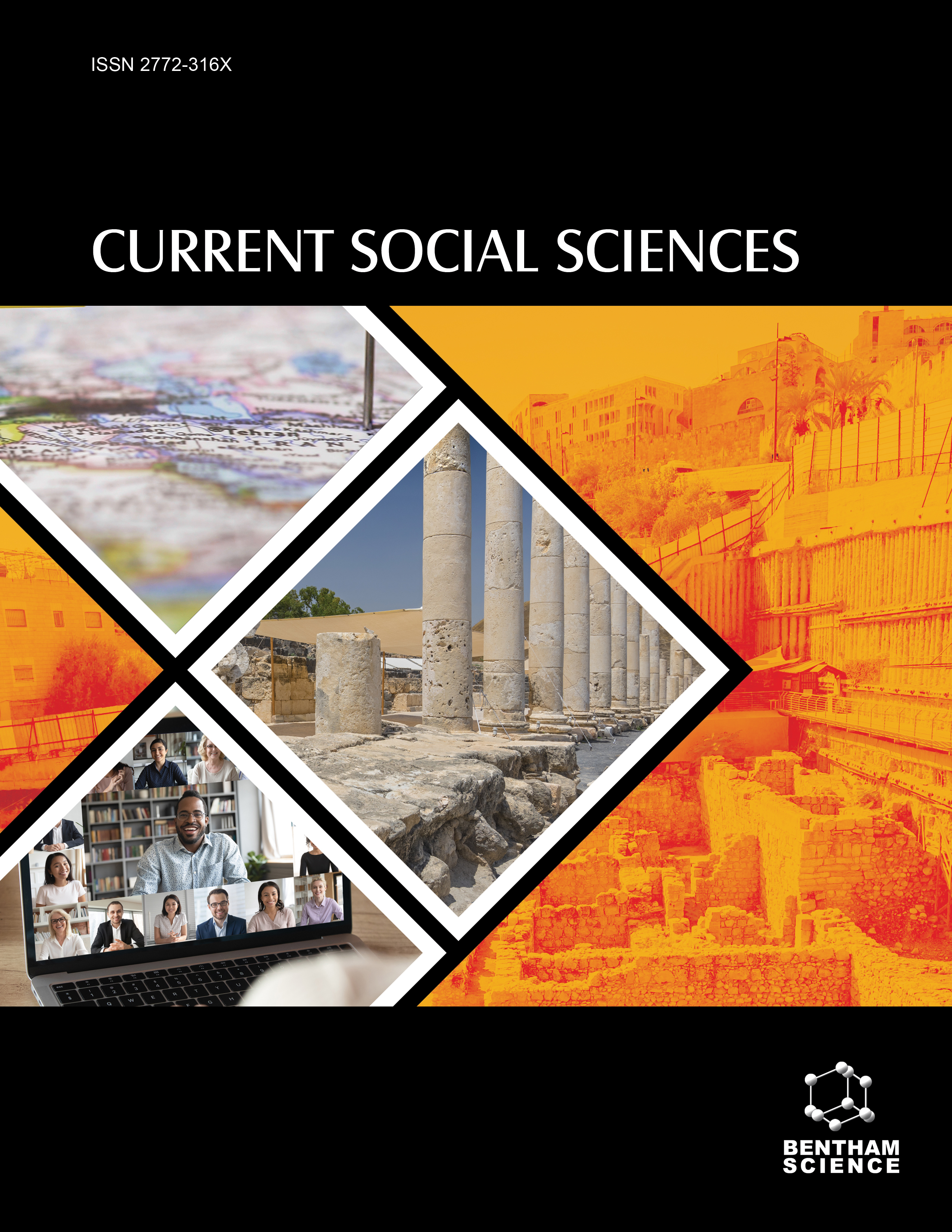- Home
- A-Z Publications
- Current Social Sciences
- Issue Home
Current Social Sciences - Current Issue
Volume 2, Issue 1, 2024
-
-
Navigating the Aquatic Challenges: Tribal Communities in India's Quest for Sustainable Solutions
More LessAuthors: Acharya Balkrishna, Nidhi Sharma and Vedpriya AryaIndia hosts the world's largest population of Scheduled Tribes (STs), constituting 8.6% of its total populace and comprising about 700 distinct tribes. Despite their cultural richness and environmental stewardship, tribal communities face significant socio-economic challenges, with 47% living below the poverty line. Predominantly residing in rural areas, these communities suffer from acute water scarcity and poor water quality. Only Read More
-
-
-
Revisiting the Facilitators of Social Media Adoption within the Tourism Sector: An Empirical Investigation in an Emerging Economy
More LessAimThis study aims to investigate the factors facilitating social media adoption within the tourism sector of an emerging economy.BackgroundSocial media has emerged as a transformative agent within the global tourism industry, fundamentally altering the ways in which tourists engage, disseminate information, and make travel-related decisions. However, the integration of social media platforms within emerging econo Read More
-
-
-
Cannabidiol (CBD) Listed as a Drug of Abuse by the Italian Health Ministry: Expert Opinion
More LessAuthors: Carla Comacchio, Matteo Balestrieri and Marco ColizziIn August 2023, the Italian Health Ministry listed cannabidiol (CBD) as a drug of abuse. This rekindled the debate on the medical and non-medical use of cannabis. The most discussed topics are risks related to the use of cannabis, the decriminalization/legalization of recreational cannabis, and use of cannabis-based drugs for medical purposes. The decision to include CBD in the “Unique Text for drugs of abuse” (DPR.309/1990), Read More
-
-
-
Pro-Environmental Behaviors in Higher Education: A Contextualized Planned Behavior Perspective
More LessBackgroundInstitutions of higher learning are critical avenues for addressing issues pertaining to climate stability and environmental sustainability. College students, as future leaders, can play a crucial role in solving the planet’s most pressing problems if they have the right information and a behavioral orientation that promotes positive environmental outcomes.ObjectivesThe current study evaluates pro-environmental behavi Read More
-
-
-
Consumer Trust in Online Advertising - How Negative Perception Impacts its Effectiveness
More LessAuthors: Robert Nowacki and Alicja FandrejewskaBackgroundBuilding trust in a product, brand, or company is an important part of forming a relationship between a company and consumers. One of the key factors influencing consumer trust is two-way communication. Advertising, as a powerful communication tool capable of attracting attention and evoking emotions, plays a pivotal role in this process. Its characteristic feature is a dynamic increase in importance; in Pol Read More
-
-
-
Technology-Mediated Task-based Instruction During COVID-19: A Case Study from Higher Education in Morocco
More LessAuthors: Abdellah El Boubekri and Marilyn LewisBackgroundTwo interests come together in this article, both from the perspectives of teachers and students from the Department of English Studies at Mohamed First University, Morocco. One is the extent to which Task-Based Learning (TBL) can inform educational technology. The other related issue is the need to capitalise on the interactive connectivity of online learning in the midst of the COVID-19 pandemic so as to reconside Read More
-
-
-
Strengthening Youth Resilience via Social Work Internship Placements within Boys and Girls Clubs: A Process Evaluation
More LessAuthors: Michelle Taylor, Leilani Madrigal, Jeremy Dolezal-Ng and Tory CoxBackgroundThere is a growing mental health crisis among youth in the United States. The objective of the current study was to conduct a process evaluation of Strengthening Youth Resilience (SYR), a unique program aimed at decreasing youth anxiety and depression via social work internship placements within after-school programs in three historically underserved communities in a large city in Southern California. The SYR pr Read More
-
Volumes & issues
Most Read This Month Most Read RSS feed
Article
content/journals/css
Journal
10
5
false
en


